|
|||||
|
Many many moons ago the genus Aphyosemion was erected for the fish we today know as Aphyosemion elegans.
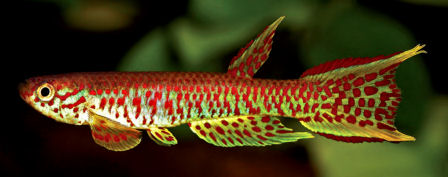
Since then many more species have been described and placed within that genus because they were more similar to it than other genera available. Some people erected other genera for fish that were for one reason or another amalgamated with Aphyosemion.
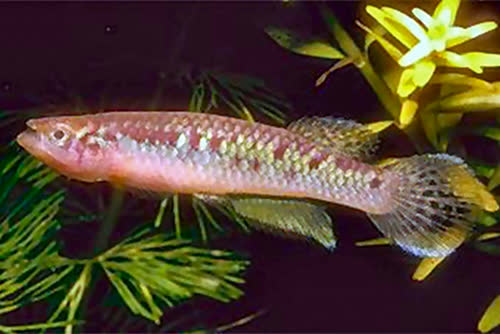 |
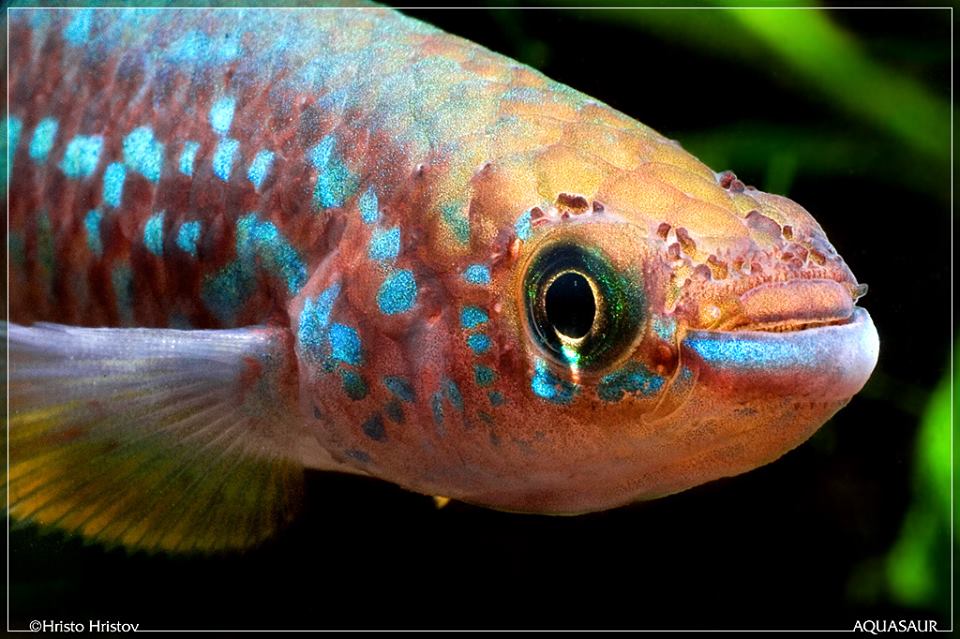 |
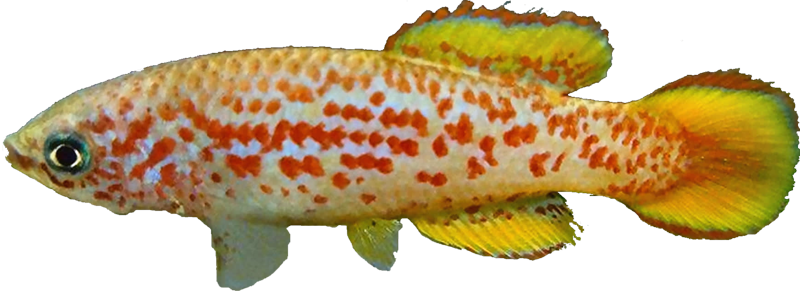 |
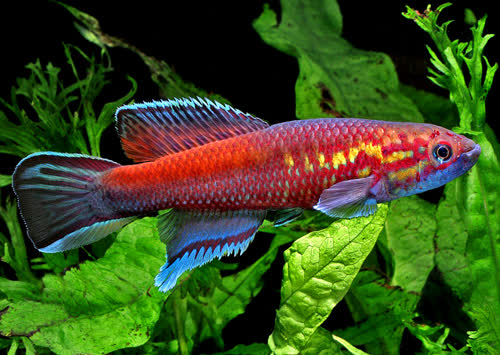 |
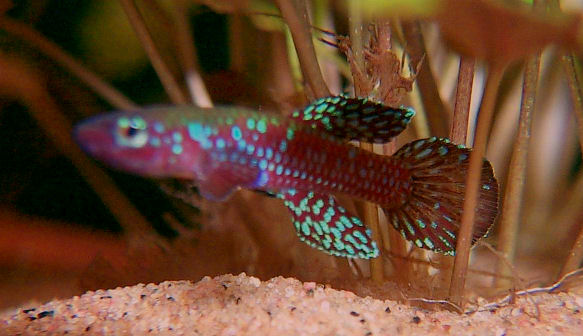 |
| Aphyosemion | Aphyosemion | Aphyosemion | Aphyosemion | Aphyosemion |
|---|---|---|---|---|
| There was a suspicion that these might not all have the same ancestor. | ||||
After much research by Scheel and others the genus Aphyosemion was recognized as an artificial grouping of evolutionary dissimilar fish and to this end the genus Roloffia was erected for the Aphyosemion-like fished of West of the Dahomy Gap in West Africa. Later on this genus was also regarded as artificial and finally replaced with the genera Scriptaphyosemion, Archaphyosemion, Nimbapanchax and Callopanchax to the horror of Germans and other admirers of Erhard Roloff, exacerbated by the fact the invalidation of the name Roloffia was the side effect of an unintentional error. These are not the fish to look at to get a sense of taxonomic stability.
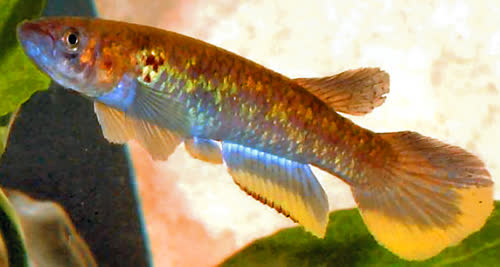 |
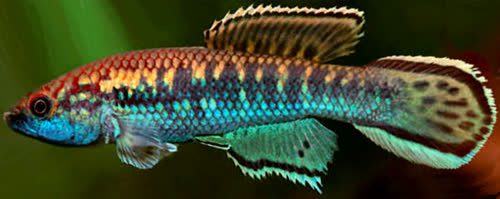 |
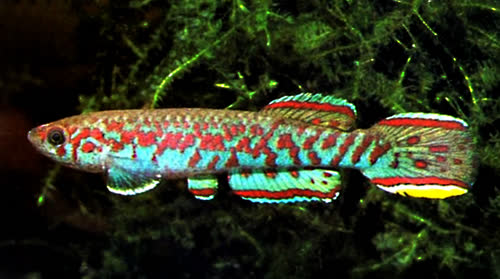 |
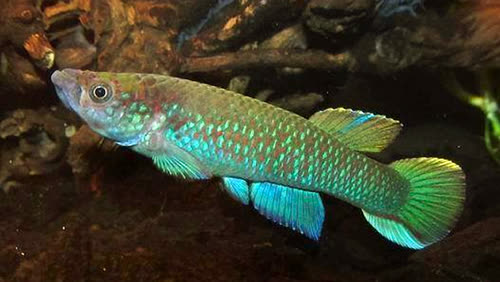 |
Roloffia Aphyosemion Nimbapanchax |
Aphyosemion sjostedti Fundulopanchax occidantalis Roloffia occidentalis Callopanchax occidentale |
Aphyosemion chaytori Scriptaphyosemion chaytori |
Aphyosemion Roloffia Aphyosemion Archiapyosemion |
In the 1970s there was a cartoon in killi-notes that went: "fold up your movable scale and they'll call you a Roloffia" |
|---|
Regardless, at about the same time (or earlier) the ones east and south of the Dahomey Gap, the Aphyosemion were being pried apart into Aphyosemion and Fundulopanchax. The latter would include such favorites as gardneri, scheeli and sjostedi. The former would include all the rest...
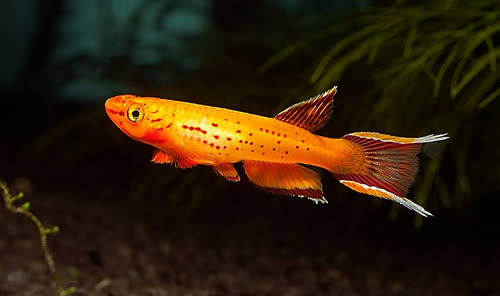 "Aphyosemion" |
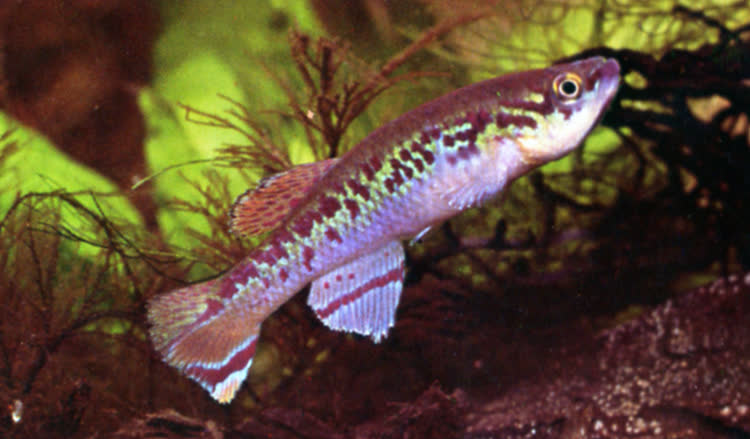 Fundulopanchax |
|||
In his 1970 book Rivulins of the Old World Scheel regarded Aphyosemion bitaeniatum, bivittatum, splendopleure etc to be all the same species even though there were differences but not enough to seperate them from each other but more than enough to separate them from the rest of Aphyosemion.
 |
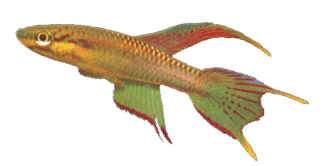 |
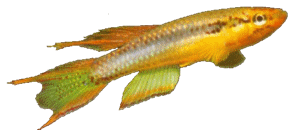 |
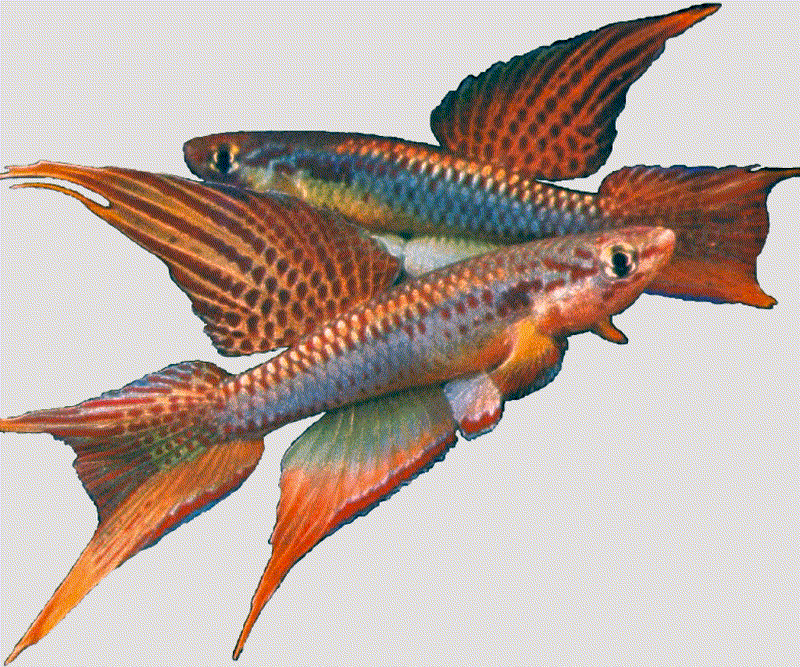 |
 |
| A. bitaeniatum "Benin City" Scheel Photo |
A. bitaeniatum "Mboumboul" Scheel Photo |
A. bitaeniatum "Meko" Scheel Photo |
A. bitaeniatum "Ijebu Ode" Scheel Photo |
A. bivittatum "Funge" Scheel Photo |
|---|---|---|---|---|
In his 1990 book Atlas of Rivulins of the Old World he had recognized the various different species on account of the work by Amiet and Radda. In 1971 Radda had already erected the subgenus "Chromaphyosemion for bitaeneatum and related species as he considered them to be more closely related to each other than the rest of Aphyosemion.
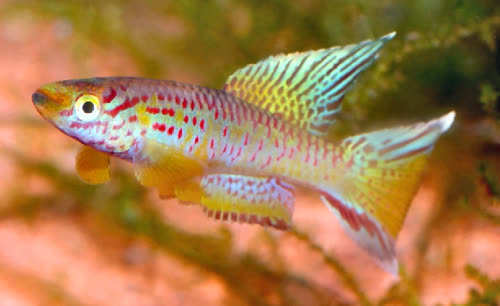 |
 |
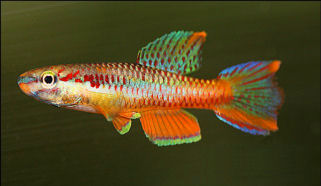 |
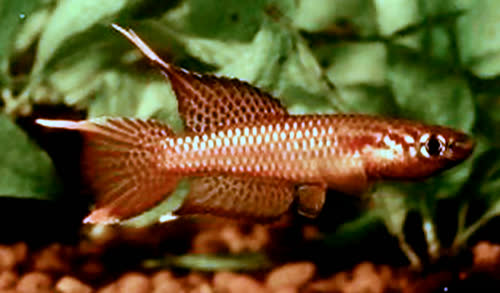 |
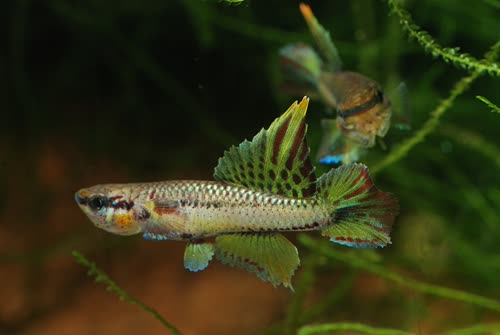 |
| RIG Ndokndak |
VOL Mbongi |
OMG Cellcuam |
PLK "Ekona" |
SPP "Bioko" |
|---|---|---|---|---|
In 1976 Kottelat described the subgenus Paraphyosemion for the gardneri-like fishes. Myers has erected Fundulopanchax in 1924 for what is today sjoestedti. In 1981 Parenti asigned many of the Aphyosemion-like fishes of the Niger delta to Fundulopanchax including *gardneri*.
While the West African genera seem very well defined the central African genera are not and there is a lot contention about what the genera should be. All agree that the grouping is artificial. Chromaphyosemion, Diapteron, Fundulopanchax (in the strict SJO sense) and Paraphyosemion are all very well defined distinct groups of fish. The DNA analysis by Murphy & Collier support these groupings BUT if we accept these four well defined genera then that means that the rest of Aphyosemion and Fundulopanchax are in trouble.
So, as with Cichlasoma, we must then accept Aphyosemion as being only applicable to elegans and its allies meaning that fish like ogoense are phylogeneticly homeless.
At this time no one has had the courage to make this move opting instead to keep the artificial Aphyosemion and Fundulopanchax which is superficially neat and tidy. However, more and more people are beginning to use terms like Diapteron, Chromaphyosemion, Gularopanchax and Paraphyosemion simply because they are more descriptive and scientific. Sonnenberg has already in his 2000 article erected Chromaphyosemion to a full genus status. Few killifish taxonomic reviewers have made this jump. Seegers is so confident about his Diapteron that he made the point of reviewing the genus alongside Nothobranchius and Epiplatys rather than with the rest of Aphyosemion in his first Aqualog.
A taxonomic schism is on the way that will shake this hobby to its foundations. Some have already resigned themselves to it and use the new terms without second thought while others continue to review the central African killies as Aphyosemion and Fundulopanchax in spite of the evidence.
Of course taxonomics is one of the most subjective of sciences so use what you choose to accept. For me it is Diapteron cyanostictum, Chromaphyosemion poliaki and Paraphyosemion marmoratus to name three examples.
Tyrone Genade
| Copyright 2022 Richard J. Sexton |